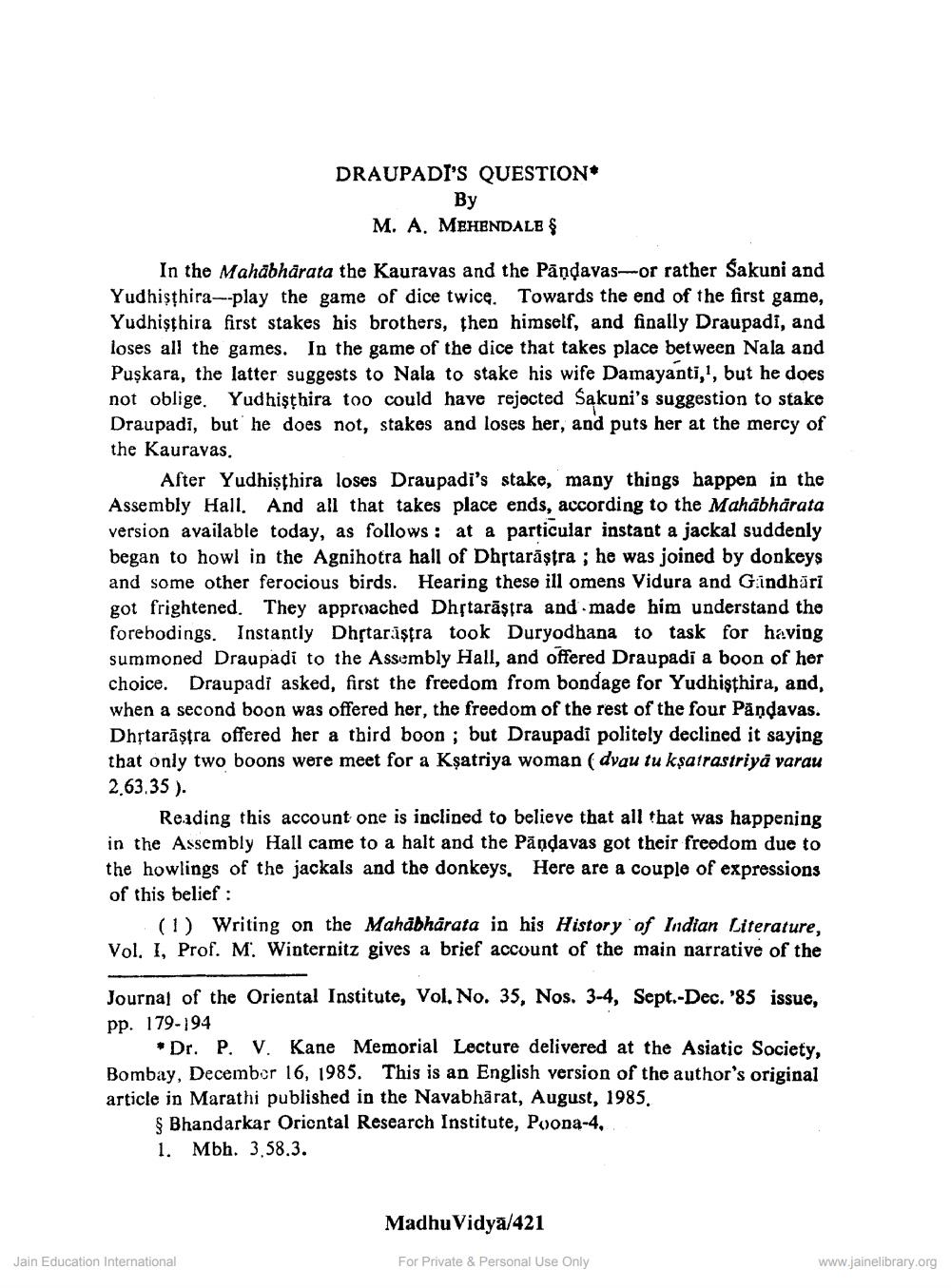________________
DRAUPADI'S QUESTION
Ву M. A. MEHENDALE $
In the Mahābhārata the Kauravas and the Pandavas-or rather Sakupi and Yudhisthira--play the game of dice twice. Towards the end of the first game, Yudhisthira first stakes his brothers, then himself, and finally Draupadi, and loses all the games. In the game of the dice that takes place between Nala and Puşkara, the latter suggests to Nala to stake his wife Damayanti,', but he does not oblige. Yudhişthira too could have rejected Sakuni's suggestion to stake Draupadi, but he does not, stakes and loses her, and puts her at the mercy of the Kauravas.
After Yudhisthira loses Draupadi's stake, many things happen in the Assembly Hall. And all that takes place ends, according to the Mahabharata version available today, as follows: at a particular instant a jackal suddenly began to howl in the Agnihotra hall of Dhstarāşfra ; he was joined by donkeys and some other ferocious birds. Hearing these ill omens Vidura and Grindbārī got frightened. They approached Dhstarăstra and made him understand the forebodings. Instantly Dhftarıştra took Duryodhana to task for having summoned Draupadi to the Assembly Hall, and offered Draupadi a boon of her choice. Draupadi asked, first the freedom from bondage for Yudhisthira, and, when a second boon was offered her, the freedom of the rest of the four Påndavas. Dhstarāştra offered her a third boon; but Draupadi politely declined it saying that only two boons were meet for a Ksatriya woman (dvau tu kşatrastriya varau 2.63.35 ).
Reading this account one is inclined to believe that all that was happening in the Assembly Hall came to a halt and the Pandavas got their freedom due to the howlings of the jackals and the donkeys, Here are a couple of expressions of this belief :
(1) Writing on the Mahabharata in his History of Indian Literature, Vol. I, Prof. M. Winternitz gives a brief account of the main narrative of the
Journal of the Oriental Institute, Vol. No. 35, Nos. 3-4, Sept.-Dec. '85 issue, pp. 179-194
Dr. P. V. Kane Memorial Lecture delivered at the Asiatic Society, Bombay, December 16, 1985. This is an English version of the author's original article in Marathi published in the Navabhārat, August, 1985.
$ Bhandarkar Oriental Research Institute, Poona-4, 1. Mbh. 3.58.3.
Madhu Vidya/421
Jain Education International
For Private & Personal Use Only
www.jainelibrary.org




